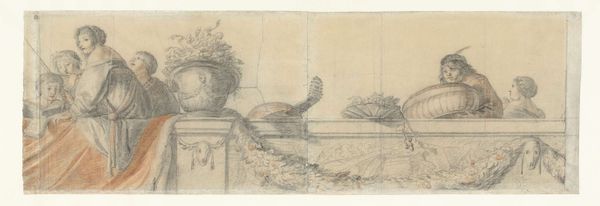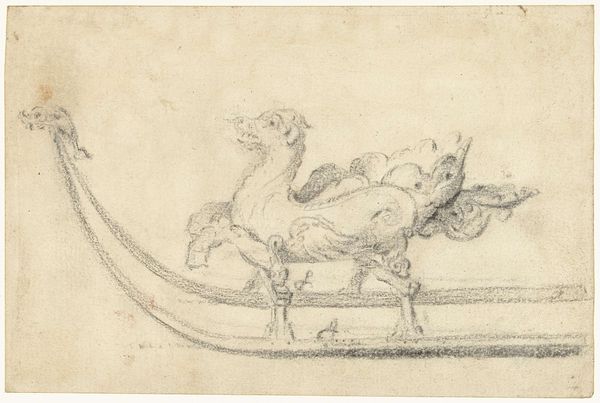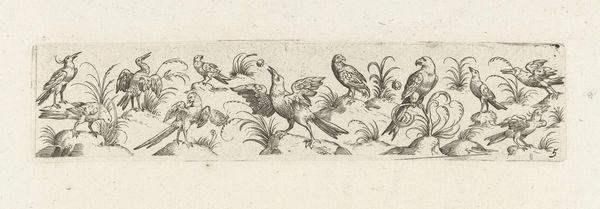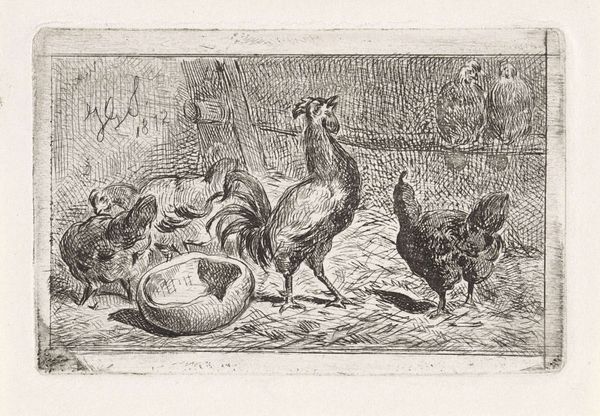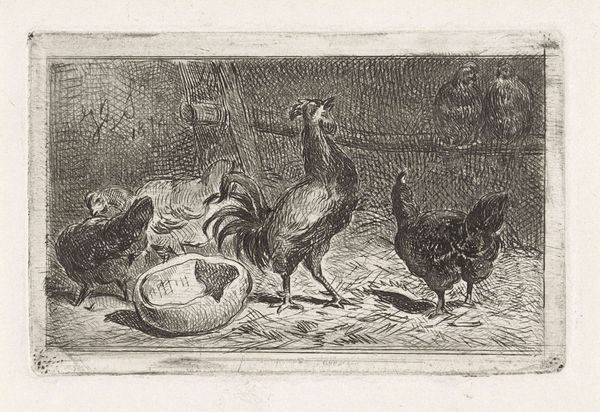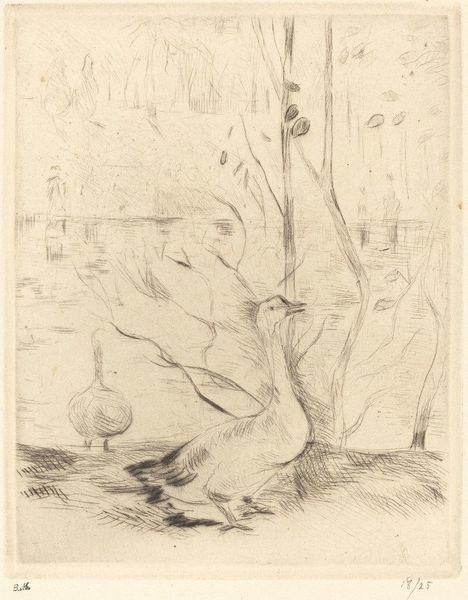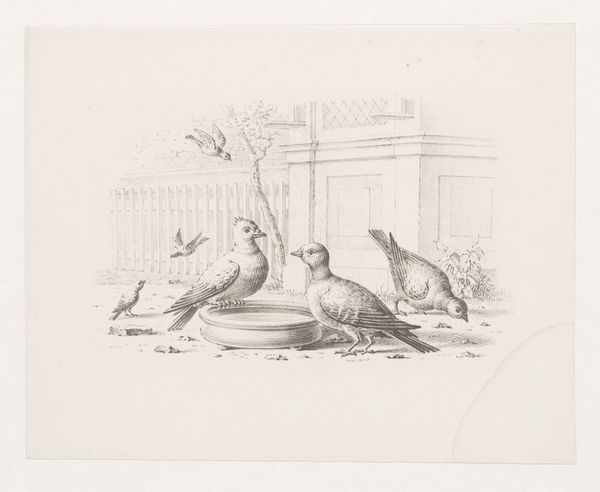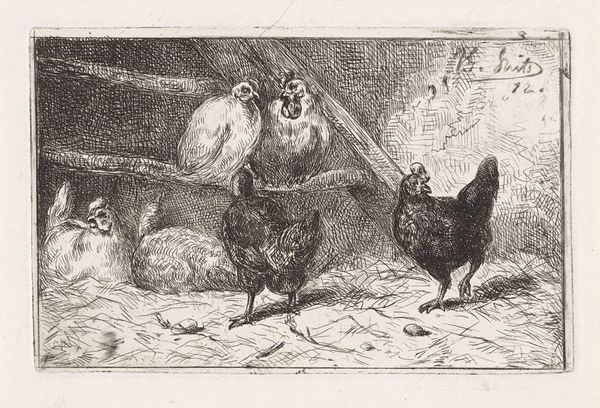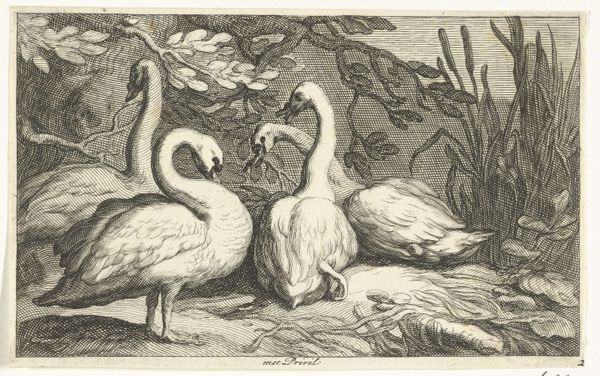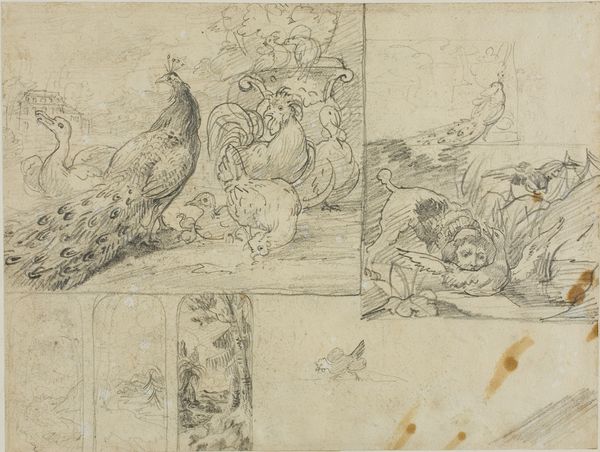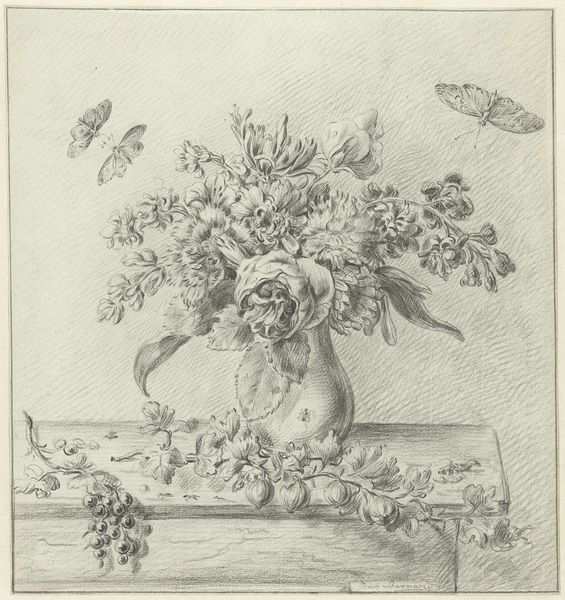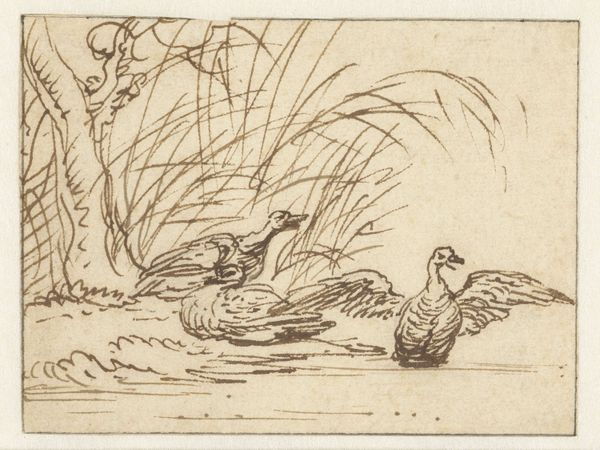
drawing, pencil
#
drawing
#
baroque
#
figuration
#
pencil
#
genre-painting
Dimensions: height 208 mm, width 650 mm
Copyright: Rijks Museum: Open Domain
Curator: Cornelis Holsteyn produced this work, titled "Persons on a Balustrade with Festoons," between 1633 and 1638. It's a drawing, made using pencil, and held in the Rijksmuseum collection. Editor: My immediate impression is one of lighthearted festivity, though somewhat restrained. The soft pencil lends a sense of intimacy, a glimpse into a private world. The rendering feels incomplete, an intriguing scene frozen in process. Curator: Absolutely. I’m drawn to the surface, the weave of the paper visible beneath the graphite. We can observe Holsteyn’s direct application of the medium to paper—there's no underdrawing to be found. This technique allows us to consider the labor and choices involved in production during this period. The accessibility of pencil contrasted with the costly paints of the era changes the dynamics of artistic creation and consumption. Editor: From a historical lens, it's interesting how this drawing engages with themes of genre-painting—daily life elevated with allegorical hints through figures and festoons. These elements invite reflection on the theatricality embedded in early modern social life and art, as this style was fashionable during the Baroque. This blurring between private observation and performative spectacle gives us a nuanced look at cultural history. Curator: Yes, consider also the peacock perched on the balustrade; is its inclusion solely aesthetic, or is it meant to suggest a particular meaning to an audience of the time, laden with contemporary concepts of consumption or exoticism? Editor: Or perhaps the balustrade itself. Was it the depiction of public and private spaces intended to engage debates about social hierarchies and the representation of elites at a time of great social change? After all, during this era in Holland the visual representation and social role of the citizenry was constantly negotiated. Curator: True! Seeing this drawing with fresh eyes after this reflection, I'm considering anew the potential relationship between the depicted and the act of artistic rendering during the 17th century. Editor: And for me, considering its reception in relation to its own socio-political period has opened up fascinating avenues of reflection. Thank you.
Comments
No comments
Be the first to comment and join the conversation on the ultimate creative platform.
